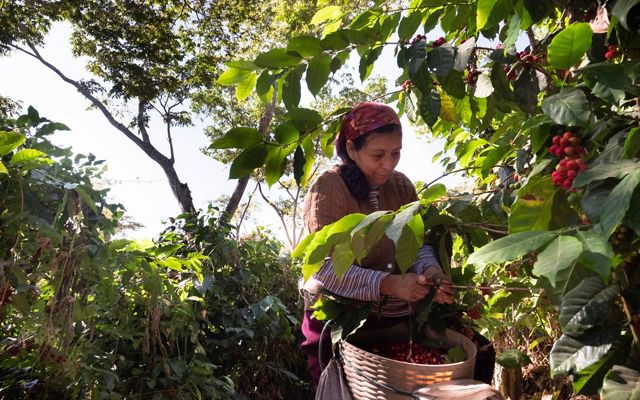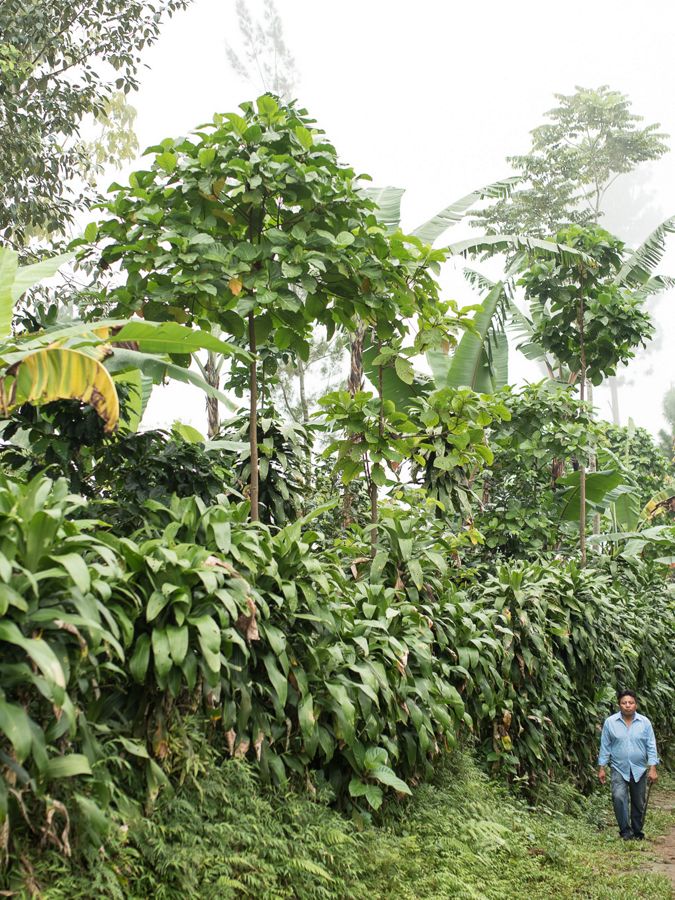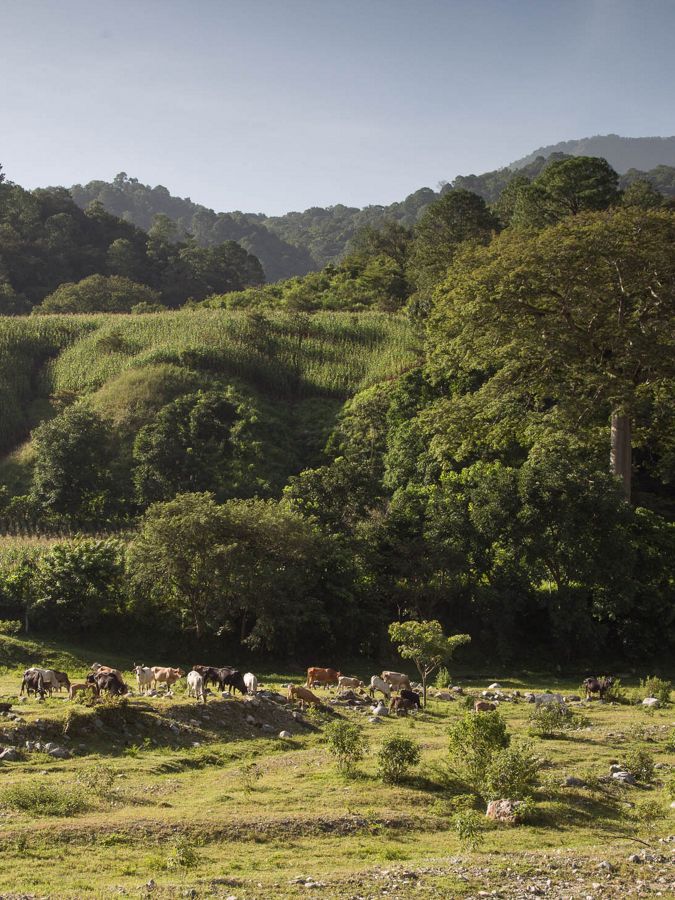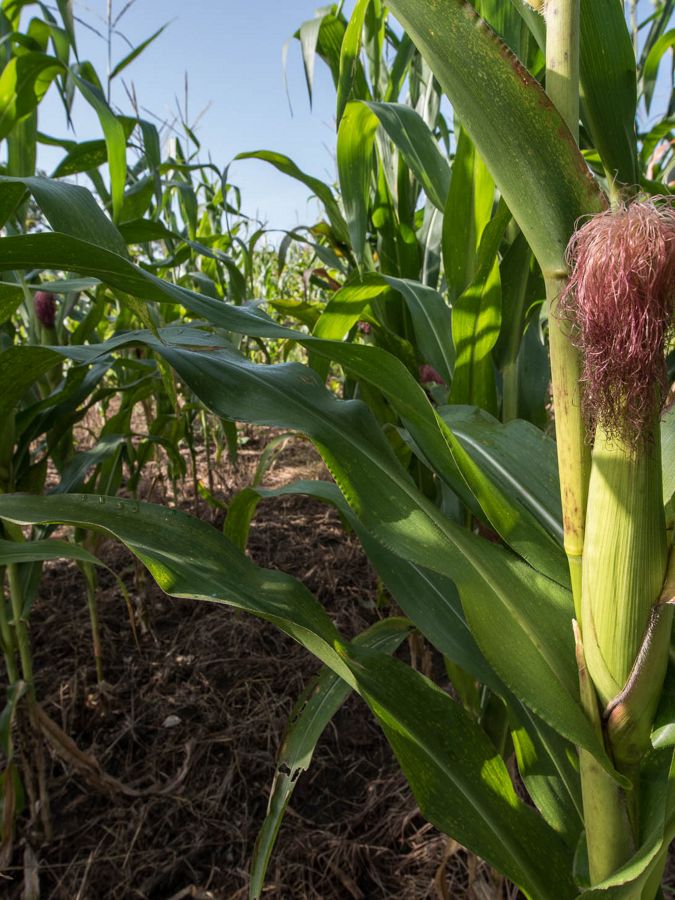Context
Mexico is one of the 12 countries considered megadiverse, and it is estimated that 10-12% of the world's species inhabit its territory. Of its 32 states, Chiapas possesses approximately 30% of Mexico's freshwater resources and is the second state with the highest biodiversity and forest coverage. Harboring over 4,000 species of vascular plants, approximately 700 bird species, and more than 200 species of mammals, despite representing only 1.5% of the area of the United States, it is home to more species of butterflies than this country.
On the other hand, Guatemala is the most diverse country in Central America and boasts cloud forests, coastlines, volcanic peaks, tropical forests, and stunning lakes that create incredible landscapes. Nearly 50% of Guatemala’s agricultural exports occur in the western highlands, home to many indigenous communities.
In Central America, we focus on actions that influence government policies and the adoption of regenerative practices.

Transforming Agriculture and Livestock Farming in Chiapas and Guatemala
Guatemala has one of the highest poverty and malnutrition rates in Latin America, affecting 76% and 67% of the population, respectively. Furthermore, challenges such as deforestation, extreme weather events, and soil degradation endanger the livelihoods and food security of more than 275,000 small-scale farmers in this region.
Likewise, in Chiapas, the areas destined for the agricultural sector are constantly expanding, as productivity decreases in already established areas, thus losing natural habitats and biodiversity. This state is also the second-highest in deforestation in the country, with 55% of its forests lost, primarily due to the expansion of livestock, coffee, and maize cultivation. This loss amounts to 4 million hectares cleared due to the pursuit of higher productivity.
Low agricultural yields are occurring due to the use of inappropriate production practices, inefficient public policies, and market pressures. In addition, extreme climate events and climate change aggravate this situation, as they directly impact production systems. Chiapas is the third largest livestock producer in Mexico, and extensive practices for this activity have significant environmental impacts, including deforestation, soil degradation, and loss of biodiversity..
To achieve change in Central America, we work with governments, local partners, the private sector, and the agricultural sector to promote more efficient and resilient production systems. This, in turn, allows us to restore soil health, regenerate forests, and recover ecosystems for the well-being of both current and future generations.
Implemented Practices
Conventional agriculture degrades natural resources. Therefore, their transformation through regenerative practices is key to ecosystem recovery and community well-being.
Through our regenerative livestock practices, milk production in Chiapas has increased by 45% across more than 30,000 hectares in the region. In addition, methane emissions were reduced by nearly 1/3 and 8,000 hectares of forests have been protected.
In Guatemala, we are working to create a multisectoral pact, in comprehensive collaboration with various partners with the aim of transforming agricultural production with a focus. This involves strengthening and implementing policies, fostering stronger connections with local and regional value chains, and planning territorial zoning.
Benefits
Through our regenerative livestock practices, milk production in Chiapas has increased by 45% across more than 30,000 hectares in the region. In addition, methane emissions were reduced by nearly 1/3 and 8,000 hectares of forests have been protected.
In Guatemala, we are working to create a multisectoral pact, in comprehensive collaboration with various partners with the aim of transforming agricultural production with a focus. This involves strengthening and implementing policies, fostering stronger connections with local and regional value chains, and planning territorial zoning.
The restoration and conservation of soils in Chiapas through our strategy enable us to create sustainable and resilient production systems. Through regenerative practices, we can improve soil health and achieve other benefits, such as:
- Increased productivity and profitability
- Reduced GHG emissions and increased carbon capture
- Increased water infiltration and retention
- Less dependence on agricultural inputs
- Increased resilience to new climate change challenges
- Improved condition of surface water sources and aquifers
Our aspiration is for a productive, resilient Central America with healthier ecosystems by 2030, where communities enjoy greater benefits and produce in harmony with nature.
Resilient Central America
We promote pilot projects with innovative solutions to build, alongside producers, Healthy Productive Ecosystems that strengthen local economies, conserve natural habitats, and are resilient to climate change.


